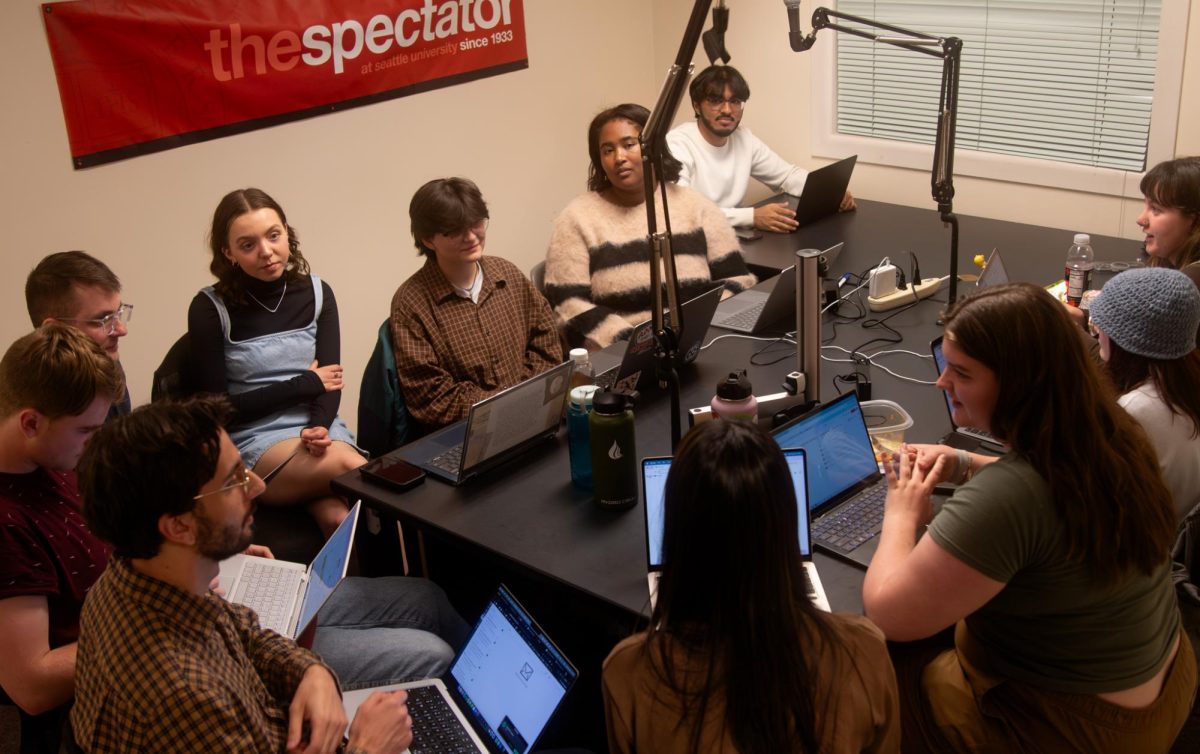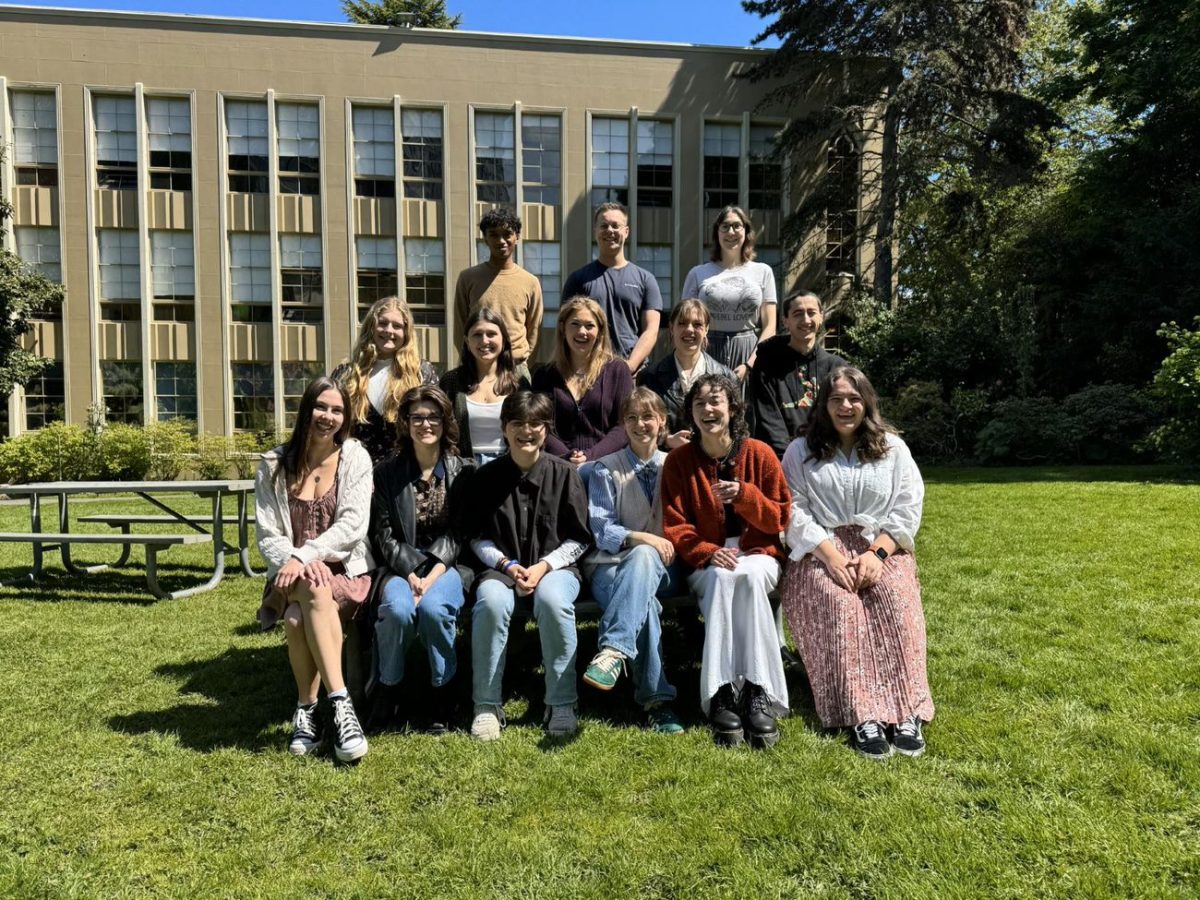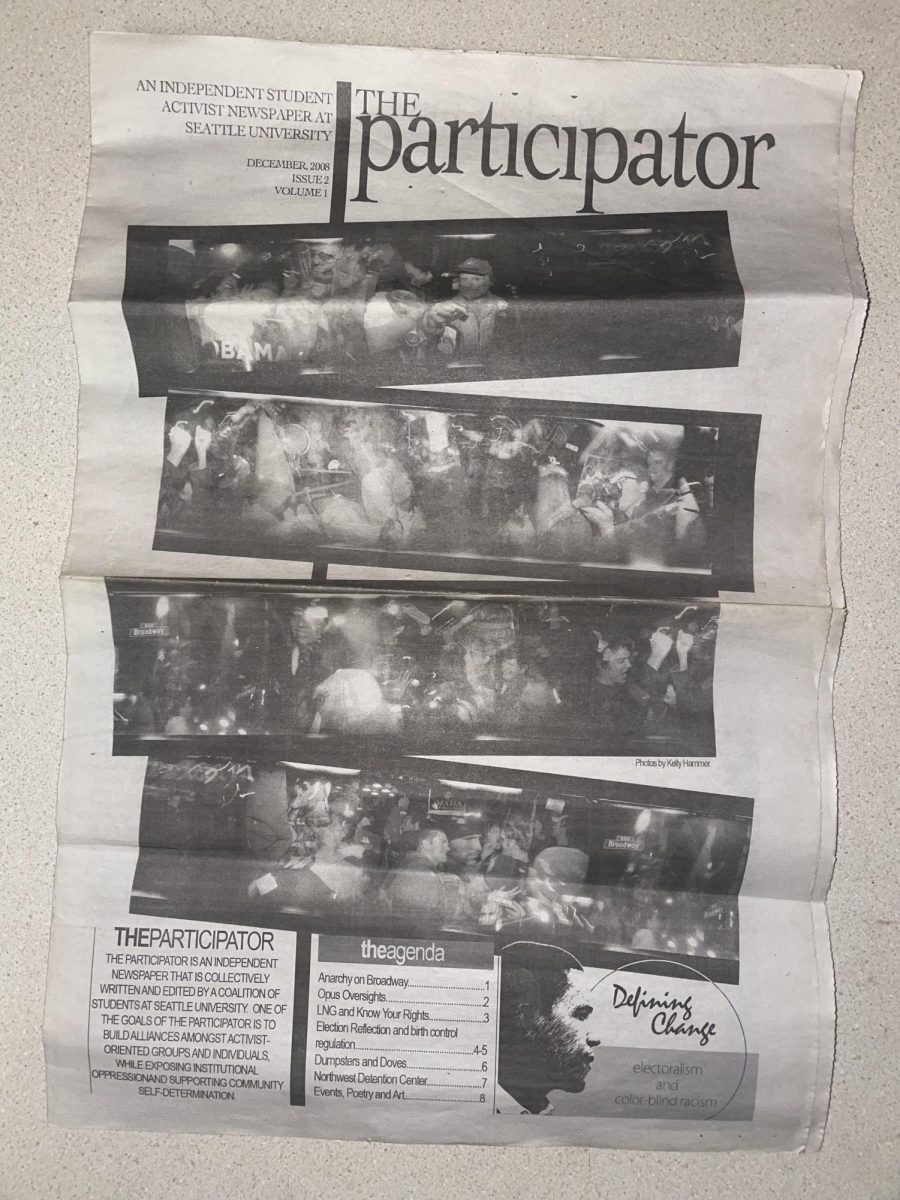When walking past a bike rack, most people assume that it was put there in order for cyclists to stow their bikes. Unfortunately, this is not always the case.
Sometimes, that bike rack was installed to prevent groups seen as “undesirable” by businesses and city governments from sleeping or congregating in the area. This is known as hostile architecture, and it can come in the form of divided public benches, statues, gated external doorways in front of businesses or even spikes.
“The whole purpose of hostile architecture and the way that it functions, is that it was designed as something that wouldn’t be perceived by non-targeted populations,” Seattle University Law Professor Sara Rankin said. “It is mostly something that is identifiable by those that are impacted.”
For example, the city of Seattle spent about $10,000 on a bike rack under an overpass that is not beneficial to cyclists and was solely placed to prevent people from congregating or sleeping in the area.
One person who has experienced firsthand the challenges of sleeping on the streets here in Seattle is a man who goes by the name Larry. Larry has a friendly smile, a booming laugh and a knuckle that lives halfway up his hand from his days of professional fighting. Larry is originally from New Orleans and has six grown kids. He is also currently experiencing homelessness and attested to the negativity often shown by the public.
“I’ve had people say to me ‘Before I give you money, I want to see you eat something out of the trash,’” Larry said. “This is where I’m at, I’m sleeping on the streets. I’m just trying to make it and better myself.”
Many folks at Seattle U are passionate about advocating for the homeless population of the city, and part of this is through interacting in a kind and helpful way with people experiencing homelessness that come onto campus. However, according to policy, people are not allowed to sleep on campus grounds.
“Because we are a Jesuit institution and have the church on campus, they know this is a place they can possibly find refuge for the time being,” Public Safety officer of 20 years Steve Sayler said. Public Safety officers, Sayler said, are able to take extra time to check in with folks they come across, and the officers are knowledgeable on nearby services such as shelters, food pantries and other services that can help people experiencing homelessness.
“Our protocol in responding to folks who have found themselves homeless and are on campus is one where we try to find the humanity in it,” Sayler said. “Not necessarily just to remove them from campus, but also finding a solution for them and trying to help them at least temporarily.”
Sayler said Public Safety typically engages with two or three people experiencing homelessness on campus each week. This is only a portion of the 11,643 individuals who were reported to be experiencing homelessness in King County in 2017, according to the organization Count Us In.
Soon, there will be posters with data from the official 2018 count spread about campus. Senior digital design major Madison Vucci will be designing those posters. She is working on the Seattle U Project on Family Homelessness which conducts advocacy projects throughout the year. Most recently, they delivered 545 postcards addressing the homelessness crisis to Washington State Senator Christine Rolfe.
“The project was to create these postcards that students and members of our community could fill out,” Vucci said. “We wanted to give it a humanistic approach.”
The postcards included a variety of notes from community members who care about housing rights. The Project on Family Homelessness aims to advocate for policy change and dismantle stereotypes around homelessness.
“Despite stereotypes, the number one cause [of homelessness] is job loss,” the project director, Catherine Hinrichsen, said. She also mentioned that family homelessness is something that is much more common than people would suspect.
“You don’t necessarily see homeless families visible in public,” Hinrichsen said. “Reasons can include that people don’t want their kids out there, but often it is just because they don’t want to deal with the stigma of being homeless.” This stigma is one that people like Larry deal with on a daily basis.
“People sometimes try to get me to drink alcohol but I say no, why would I do that,” Larry said. “I gotta sleep out here in the cold. I don’t want to freeze to death and not wake up in the morning. Last night I woke up with tears frozen on my cheeks. A lady I know one block away from me got hypothermia and almost died.”
With the number of people experiencing homelessness rising each year, it can be daunting to look for solutions. Hinrichsen suggests donating to clothes and food drives, volunteering at shelters and food pantries, registering to vote and advocating for policy change and simply spreading awareness.
“Everybody can do something, and everybody needs to do something,” Hinrichsen concluded.
Bailee may be reached at
[email protected]











